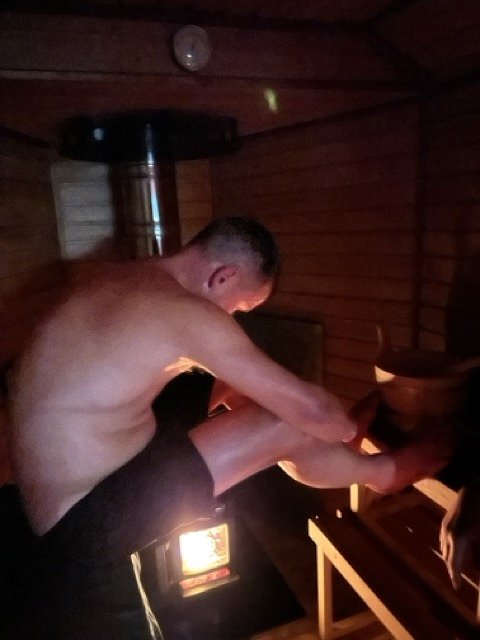What Happens in Your Body When You Step Into a Sauna?
You know that moment you walk into a sauna and it’s hot – but not immediately overwhelming? That’s because the body’s reaction to heat isn’t instantaneous like it is when you plunge into cold water. In the cold, everything kicks into high gear the second you’re submerged. But in the sauna, it’s a slow, unfolding process.

Posted on Thu 29 May 2025 · by Danny
As you sit there, your temperature sensors in the skin start to send signals to the brain’s temperature control centre – the hypothalamus. The hypothalamus then releases adrenaline and noradrenaline. These hormones work to increase your heart rate, dilate blood vessels, and redirect blood flow to the skin’s surface to help your body lose heat.
Your body’s number one priority is to maintain a core temperature of around 37°C – it’s called homoeostasis, and it’s the balance that keeps all your cells functioning properly. To maintain this balance, your circulatory system goes into overdrive. Up to 70% of your blood can be redirected to the skin to release heat, then back to the organs to keep everything stable.
As your body gets warmer, your heart rate rises to somewhere between 120 and 150 beats per minute, but your stroke volume – the amount of blood pumped per heartbeat – stays about the same. So, the blood just moves faster. Soon after, you start to sweat. Sweat evaporates and helps carry heat away from the surface of your body. In a typical 15–20-minute sauna session, you can sweat out up to half a kilo of fluid.
This is why staying hydrated is so important. But here’s something people often overlook: hydration isn’t just about water. Your body needs salt – specifically sodium – to bind water molecules and keep you hydrated. Eating something salty after a sauna can help replace lost electrolytes and fluids.
Heat stress usually kicks in when your skin temperature climbs to about 40°C, though your core temperature only rises about one degree, to 38°C. The demand for oxygen in the body also goes up by about 60–70%. This increase in demand can cause you to breathe faster – sometimes even to the point of hyperventilation. When you breathe too much, you blow off carbon dioxide, which can make your blood pH shift slightly and cause dizziness, light-headedness, or tingling in your fingers or ears.
If you start to feel like this, it’s a sign you need to cool down. That’s why it’s so important to keep your breathing slow and steady in the sauna. Breathing through your nose into your belly helps keep you calm and balanced.
And remember – the heat should never feel painfully intense. If it does, the sauna is too hot. Open the door, let in some fresh air, and allow the environment (and your body) to recalibrate.
The next time you’re in the sauna, pay attention to how your body gradually responds. Notice how your heart picks up, how you start to sweat, and how your breathing naturally wants to speed up. It’s all part of your body’s beautifully orchestrated process to maintain balance – even under heat stress.